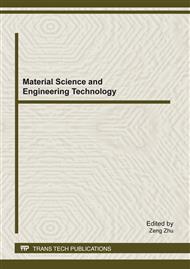p.468
p.474
p.480
p.487
p.492
p.500
p.506
p.512
p.516
An Efficient M-Ary Modulation Technique Using Single Linear Chirp Signal
Abstract:
In recent years, as the indoor wireless communication has gained increasing attention, various kinds of wireless communication techniques have developed rapidly to obtain a better system performance. Chirp signal is also noticed again due to the feature of low power consumption, high processing gain and low cost. A novel M-ary chirp modulation technique is proposed in this paper to increase the system performance both under AWGN channel and indoor wireless channel. Optimal linear chirp signals are designed in this system to reduce the cross correlation, and simplify the complexity of the system. Simulation shows that, compared with the binary orthogonality modulation technique, the M-ary chirp modulation technique using optimal linear chirp signal has a high data rate with a reasonable BER both under AWGN channel and indoor wireless channel.
Info:
Periodical:
Pages:
492-499
Citation:
Online since:
February 2012
Authors:
Price:
Сopyright:
© 2012 Trans Tech Publications Ltd. All Rights Reserved
Share:
Citation:


